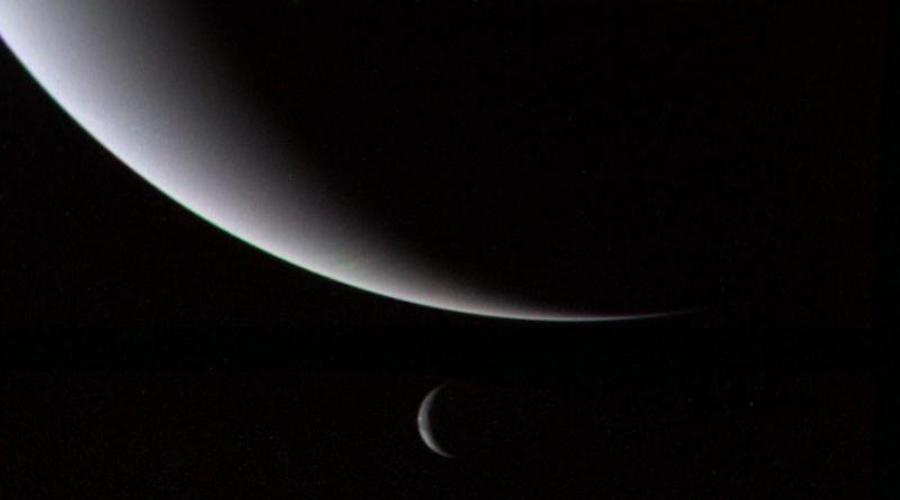Scientists gain new insights into diamond rain on Neptune, Uranus

New research has determined that diamond rain on Neptune and Uranus forms at a lower depth than previously thought, and could have a stronger influence on the formation of magnetic fields.
In a paper published in the journal Nature Astronomy, an international team of scientists explains that earlier work on X-ray lasers discovered that diamonds should form from carbon compounds in the interior of the large gas planets because of the high pressure prevailing there. These would then sink further into the interior of the planets as a rain of precious stones from the higher layers.
However, a recent experiment at the European X-Ray Free-Electron Laser Facility (XFEL) has now shown that the formation of diamonds from carbon compounds already starts at lower pressures and temperatures than assumed. For the gas planets, this means that diamond rain already forms at a lower depth than thought.
Diamond rain would also be possible on gas planets that are smaller than Neptune and Uranus and are called “mini-Neptunes.” Such planets do not exist in our solar system, but they do occur as exoplanets outside of it.
On its way from the outer to the inner layers of the planets, the diamond rain can entrain gas and ice, causing currents of conductive ice. Currents of conductive fluids act as a kind of dynamo through which the magnetic fields of planets are formed.
“The diamond rain probably has an influence on the formation of the complex magnetic fields of Uranus and Neptune,” lead researcher Mungo Frost said in a media statement.
Frost and his colleagues used a plastic film made from the hydrocarbon compound polystyrene as a carbon source. Under very high pressure, diamonds are formed from the foil.
At the European XFEL, the researchers generated the high pressure and the temperature of more than 2,200 degrees Celsius that prevail inside the icy gas giants with the help of diamond stamp cells and lasers.
The stamp cells function like a mini vice in which the sample is squeezed between two diamonds. With the help of X-ray pulses, the time, conditions and sequence of the formation of the diamonds in the stamp cell can be precisely observed.
“Through this international collaboration, we have made great progress at the European XFEL and gained remarkable new insights into icy planets,” Frost said.
{{ commodity.name }}
{{ post.title }}
{{ post.date }}

Comments